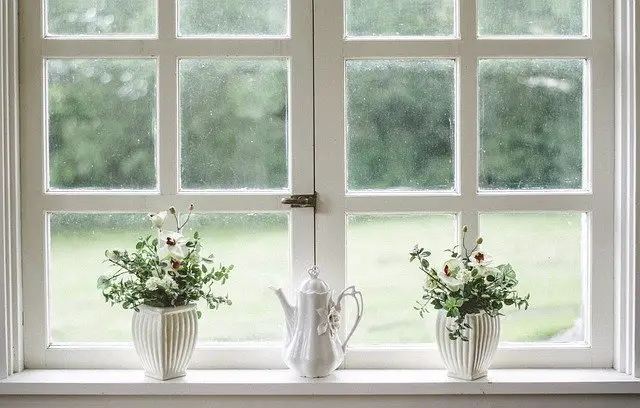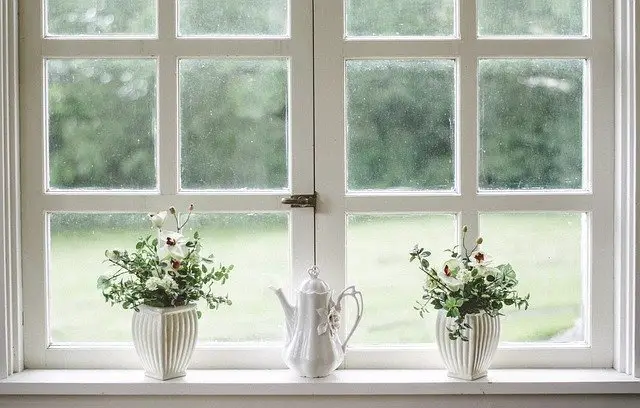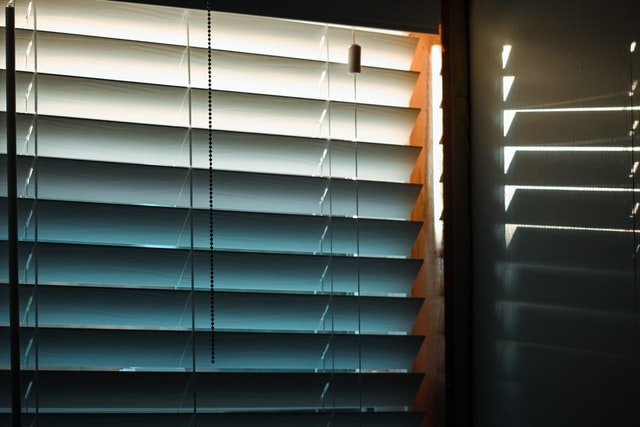Windows are often the primary source of heat loss in any home. So while large windows can be beautiful, they come at a cost. This is especially true when your windows are single pane glass as their insulation capacity is quite low. Luckily, there are easy ways to improve their insulation capacity without replacing the entire window.
Insulation options for single-pane windows include window film, cellular shades, blinds, shutters, and insulating curtains. Additionally, fixing leaks, cracks, and drafts with draught strips prevents a large part of unwanted airflow.
At the end of this post you can find an overview of the insulation options, their relative costs and their effectiveness.
First, check for leaks, cracks and drafts
Start by checking if your windows close sufficiently or if there are leaks that produce a draft. You might need to try the following since leaks are not always immediately visible. Light a stick of incense or light a match and blow it out to create some smoke. See if the smoke is rising naturally or if it is picked up by a draft. This method is particularly effective on a windy day.
Draught and weather strips
The first thing you should consider is sealing leaks. Once you have found them using the method described above, you can apply draught strips. These are rubber foam or plastic strips that can be taped along your window to prevent air from entering your home. Similar strips are available to seal off gaps in floorboards.
Another option is to apply a weatherstrip on your window. A weatherstrip is installed inside the window frame and functions similarly to a draught strip. Installing a weatherstrip takes a bit more effort than applying a draught strip, but does not change the look of your window.
If you have small holes or small cracks that you’d rather just stuff, rope caulk is an excellent option. Rope caulk is a type of caulk or putty with which you can stuff a hole or crack to seal it.
Other than windows, doors can let through quite a bit of air. A door snake or sweep is an excellent and affordable solution.
The many window insulation options
Window insulation film
Insulating window film is an inexpensive, easy to install way to improve your single pane windows insulation capacity. A window insulation film is a plastic sheet that covers your window and increases the insulation capacity. Two types of insulation films are available: shrink film and static cling film.
Shrink film is attached to the window frame with double-sided tape and creates a pocket of air between the glass and the plastic. This type of film does, however, limit the use of your window as it blocks your means of opening the window.
Although the packaging might advise using a blow dryer to tighten the plastic, in time the cold from the window will do this job for you. So if you already tightened up the plastic yourself, you risk the plastic tightening more and pulling off.
Static cling film is a plastic film that is applied directly onto the glass. In this way, it tries to mimic a double glazed window. Compared to the shrink film, this does not impair the functionality of the window. However, installing this film requires a little more work since you will want the film placement to be quite precise. Additionally, you will want to avoid wrinkles. You can remove them easily by scraping the surface with a window cleaner.
Of course, before you install any film, make sure you clean the window and window frame. Also make sure you remove the film during summer if you don’t want to block out the heat from the sun.

How effective is window film?
There is varying information about the effectiveness of window film. It is likely, based on information from an independent Dutch foundation, that window film is about as effective as regular shades.
Although window film is somewhat effective at increasing your windows insulation capacity, window film is even more effective at blocking sun rays coming in than at keeping heat inside. So window film is an even better option if you are concerned with keeping the heat out.
Possible disadvantages of window films are:
- Possible loss of incoming sunlight
- Cleaning window film requires some extra care
- Window film may cause reflections
If you are using window film to insulate your windows during winter, consider removing them when you want to welcome the sun’s rays in your home during the summer.
Window shades
Roller shades as well as roman shades are normally made of one layer of thin material, therefore their insulative properties are limited. Roller and Roman shades are most effective at blocking sun rays and thereby reducing heat gain. However, according to a fact sheet by the Cornell University, regular roller shades can still reduce single-pane window heat loss by up to 31%. (source)
Insulated cellular shades
Insulated cellular shades are shades that are specifically designed to percent heat loss through your window. They contain one or more pockets of air that reduce the conduction of heat through the window.
According to the energy department of the United States, insulated cellular shades typically have the highest insulation value of all window coverings. When heating your house, cellular shades can reduce the heat loss through your window by as much as 40%. In cooling season, cellular shades can reduce unwanted solar heat by as much as 80%.
Cellular shades are an excellent window insulation option as they not only prevent heat loss through your window but can also look beautiful, allow you to control incoming light, and increase your privacy.
Blinds
Blinds are similar to shades but are designed to be able to adjust the incoming sunlight. Therefore, if that is your goal, blinds are an excellent option. However, for insulation purposes, blinds are at a disadvantage to shades as their separate components easily let through heat.
Shutters
Shutters are normally tightly attached to the inside of your window frame. Therefore, when closed, shutters have very little openings for air to pass through. Additionally, shutters are made from wood or some type of plastic that has a far greater insulation capacity than glass windows. In this way, shutters increase the insulation capacity of your window.
According to a fact sheet by the Cornell University, shutters with an insulating core can save up to 90% of your heat loss through single-pane windows. (source)
However, shutters only provide insulation when closed. Therefore they are most effective in bedrooms or during the evenings. If most of your time spent in the living room is during the early mornings and evenings, shutters are an excellent option.
Insulating curtains
Another excellent option for better insulation are thermal curtains. Thermal curtains are specifically designed for insulation and are an aesthetic way to improve your comfort.
However, thermal curtains only provide maximum insulation when closed. Therefore they are most effective in bedrooms or during the evenings. If most of your time spent in the living room is during the early mornings and evenings, thermal curtains are an excellent option.
The effectiveness of thermal curtains
The effectiveness of thermal curtains is difficult to determine since it highly depends on how they fit against the window and if there are openings that let trough air. Based on the Cornell University fact sheet, conventional drapery can reduce heat loss of single-pane windows by a maximum of 10%. Tightly installed drapery, however, can reduce heat loss by up to 25%. Tightly installed thermal curtains should be able to provide even better insulation.
It is especially important to close the top of the curtains. this way, little airflow can take place between the air in your room and the air between the curtains and the window.
Choose your insulation based on your habits
As mentioned in this article, many options such as shutter and curtains need to be closed to provide insulation. Therefore, your habits play a significant role in choosing the best insulation option.
If you require a cheap option that does not interfere with incoming sunlight, window film might be your best option. However, if you prefer a more aesthetic insulation option that you can open and close any time, cellular shades or thermal curtains are an excellent choice.
Overview of insulation options
Table 1: Comparing the different insulation options on costs and heat loss reduction of single-pane windows.
| Type of insulation | Costs | Heat loss reduction |
|---|---|---|
| Window film | $ | Relatively small |
| Shades | $$ | Up to 30% |
| Cellular shades | $$ | Up to 40% |
| Blinds | $$ | Relatively small |
| Shutters | $$$ | Up to 90% |
| Curtains | $$ | Up to 25% |
The overall effectiveness of window insulation
Window film helps increase the insulation capacity of your windows and therefore of the wholw house. The eact effectiveness depends on many factors. For example, your habits, local climate, and the overall insulation of your home influence the performance of window insulation.
You can improve your windows insulation capacity even more by combining several insulation options.




